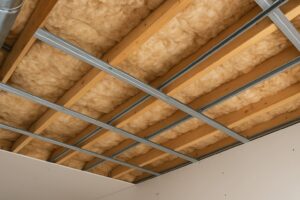If you’re asking how to plan a home renovation, you’re already on the right track. Good planning reduces surprises, shortens timelines, and protects your home. In Edmonton, where cold winters, local permit rules, and established neighbourhood character influence decisions, planning matters even more. This guide walks Edmonton homeowners through a clear, practical, step-by-step process for planning a renovation: defining goals, checking permits, choosing materials, selecting contractors, building a realistic timeline, and managing the project to a successful finish.
Throughout the article, you’ll find local references, proven checklists, and actionable advice from Steadfast Constructions Ltd., a local full-service renovation partner that helps homeowners move from idea to inspected completion. Where relevant, authoritative sources are cited so you can confirm municipal rules and best practices.
Start with clear goals and priorities.
Define your Why and outcomes.
Before you do anything else, write down why you want the renovation and what success looks like. Are you updating a kitchen for daily family use, improving accessibility, creating a rental suite, or preparing to sell? Clear goals guide every later decision; from layout to finishes to permit choices.
Action steps:
- List the primary purpose (comfort, resale, rental income, accessibility).
- Note must-haves (number of bedrooms, accessible shower, extra storage) and nice-to-haves.
- Collect inspiration photos showing specific features you like; they help designers and contractors understand your taste.
Local tip: In Edmonton’s neighbourhoods with older homes (for example, Glenora or Strathcona), consider whether you want to preserve character features. In newer subdivisions, contemporary open-plan layouts might be a better fit.
Scope, feasibility, and initial site review
Conduct a feasibility check.
Once your goals are clear, do a feasibility check before falling in love with features that may not fit your house or zoning. This means assessing structure, services (plumbing, electrical, HVAC), and site constraints.
Key checks:
- Identify load-bearing walls if you plan layout changes.
- Locate plumbing stacks and electrical panels (moving them is complex).
- Check access for deliveries and whether permits or development approvals may be needed. Many common renovation actions, adding bedrooms, finishing basements, or altering windows, require permits in Edmonton. Confirm early with the City’s renovation and permit pages. edmonton.ca
Steadfast tip: A site visit with a contractor or designer will reveal hidden constraints and reduce surprises later.
Permits, rules, and documentation
Understand permit triggers and the review process.
Permits protect safety and resale value. In Edmonton, permits are typically required for structural changes, adding or modifying living space (including many basement developments), plumbing or electrical work, and modifications to exits or windows. The City’s renovation pages outline common permit triggers and the submission process; check them early to avoid delays. edmonton.ca
What to expect:
- Building permits for structural, framing, or layout changes.
- Separate trade permits for plumbing, gas, and electrical work.
- Inspections scheduled at key milestones (rough-ins, insulation/vapour barrier, final occupancy).
Why this matters: Work done without required permits can lead to stop-work orders, difficulties at sale time, or denied insurance claims. Hiring a contractor that manages permit submission saves time and reduces risk.
Make a realistic timeline.
Build your renovation timeline.
A realistic timeline is essential. When homeowners ask how to plan a home renovation timeline, they often underestimate municipal review time, lead times for custom materials, and the time needed to coordinate licensed trades.
Timeline building blocks:
- Pre-construction: design decisions, drawings, and permit submission.
- Permit review: municipal plan checks and revisions (varies by complexity and season).
- Demolition and rough-ins: plumbing, electrical, mechanical.
- Inspections and drywall: after rough-ins pass municipal review.
- Finishes and commissioning: tiling, cabinetry, counters, painting, and final inspections.
Local reality: Edmonton’s construction seasonality (colder months can affect exterior work and deliveries) and municipal workload can affect permit timelines; plan accordingly. Use the timeline as a planning tool, and update it as permits and supplier schedules are clarified.
Budgeting and financing options (no costs here)
Plan budget categories (without figures)
While we won’t list dollar amounts here, it’s helpful to organize your renovation budget into categories: design and permits, structural and trade work, finishes and fixtures, contingency, and project management. Knowing the categories ahead of time helps you prioritize and make trade-offs without losing sight of essential items like waterproofing or licensed trades.
Financing options:
- Home equity products, renovation loans, and government programs can support projects. Professional lenders and CMHC resources describe options and requirements. If you plan to finance, gather lending guidance early so your scope aligns with lender expectations. Canada Mortgage and Housing Corporation
Choosing materials and systems that suit Edmonton
Pick climate-appropriate materials
Edmonton’s climate—cold winters, freeze-thaw cycles, and seasonal humidity- makes material selection important. Choose materials and systems that tolerate temperature swings, resist moisture where needed, and require reasonable maintenance.
Material guidance:
- Use engineered wood or stable composites for cabinetry to avoid seasonal warping.
- For floors near entries or mudrooms, pick resilient surfaces that handle grit and moisture.
- Prioritize proper vapour control and insulation in basements and exterior walls.
Steadfast note: We source tested local materials and specify installation methods that perform well across Alberta seasons.
Find and vet renovation professionals.
Vet contractors and design partners
Choosing the right team is often the single biggest factor in project success. When asking how to plan a home renovation, include contractor vetting as a core step.
Checklist for vetting:
- Confirm business registration, liability insurance, and WCB coverage.
- Ask about trade coordination and whether the contractor manages permits.
- Request local references and portfolios of comparable Edmonton projects. Visit completed projects if possible.
- Look for membership in recognized programs like RenoMark—a national renovator program that signals a commitment to a renovation-specific code of conduct and consumer protections. Canadian Home Builders’ Association+1
Interview questions:
- How many similar projects have you completed in Edmonton?
- Who will be the on-site contact and project manager?
- How do you handle change orders and unforeseen conditions?
- Can you provide a clear, written contract and a milestone schedule?
Finalizing design and permit-ready drawings
Move from concept to construction documents.
Good designs become good builds when drawings are complete, detailed, and permit-ready. This includes floor plans, structural notes, electrical and plumbing layouts, and specifications for finishes and fixtures.
Why invest in documentation:
- Clear drawings reduce plan-check comments and speed permit approval.
- Trades use drawings to price, schedule, and perform work correctly.
- Well-documented projects reduce misunderstandings that create delays or disputes.
Steadfast Constructions assists clients with permit-ready documentation and coordinates any required professional engineering or specialized reports.
Managing the build and communication
On-site management and homeowner communication
A key part of how to plan a home renovation is deciding how involved you want to be during construction. Decide early whether you will act as project manager or prefer the contractor to coordinate all trades and communications.
Good on-site practices:
- Weekly progress updates and a short “what’s next” note from the contractor.
- A shared punch-list and photo log to track minor items.
- A single-point contact for questions and a formal change-order process.
Steadfast provides milestone reports, coordinates inspections, and ensures homeowners receive a final walkthrough and maintenance guidance at handover.
Testing, inspections, and handover
Inspection milestones and final sign-off
Municipal inspections mark critical checkpoints. Typical inspections include structural/rough framing, plumbing rough-in, insulation/vapour barrier, and final occupancy. Make sure your contractor schedules inspections in sequence—missing an inspection can trigger rework.
Handover steps:
- Final inspection and occupancy sign-off.
- Manufacturer documentation and warranties for installed products.
- A maintenance checklist and operation demo for installed systems (e.g., HRV, boiler, smart controls).
Steadfast commitment: We ensure permits and inspection records are organized and handed to homeowners at completion.
Common pitfalls and how to avoid them
Top pitfalls Edmonton homeowners face
Common problems we see include:
- Skipping permit checks early in planning (causes delays later). edmonton.ca
- Choosing trendy finishes before testing durability for local conditions.
- Not allowing time for municipal plan checks or supplier lead times.
- Poor scope definition leading to frequent change orders.
How to avoid them:
- Confirm permit needs before finalizing design.
- Prioritize functional systems (waterproofing, ventilation, insulation) before cosmetic choices.
- Build lead time assumptions into your timeline and confirm supplier availability.
- Get a clear written contract that covers the change-order process.
An Edmonton kitchen and basement refresh
A recent Steadfast project combined a kitchen rework and basement finish in an older Edmonton bungalow. Key planning steps that kept the project smooth:
- Early site assessment flagged an aging plumbing stack near the kitchen, so the layout prioritized wet zones near existing plumbing.
- Permits were submitted together for the main building changes and trade work, reducing duplication. The City’s renovation pages were used to confirm required submissions. edmonton.ca
- Material selections focused on engineered cabinetry, resilient flooring, and a low-maintenance backsplash to perform in cold months.
- Weekly milestone reports, a clear change-order process, and a final handover meeting helped the homeowner feel in control.
Result: an inspected, fully documented renovation that met the homeowner’s priorities for function and durability.
Sustainability, durability, and long-term thinking
Choose durable and lower-impact options.
When planning, consider longevity and indoor environmental quality. Use low-VOC finishes, durable surfacing near high-use zones, and energy-efficient appliances and ventilation. The CMHC Renovator’s Technical Guide and other federal resources discuss “house-as-a-system” thinking—understand how changes in one area affect the whole home. publications.gc.ca
Documentation and resale
Keep records: permits, inspection reports, warranties, product manuals, and photos of key assemblies. This documentation demonstrates that work was done legally and professionally and supports resale or insurance claims.
Steadfast Constructions provides a complete project binder at handover so homeowners have a single place for all project documentation.
Conclusion
Planning a renovation well removes stress and improves results. If you’re asking how to plan a home renovation in Edmonton, follow these steps:
- Clarify goals and priorities.
- Do a site feasibility check and confirm permit triggers early.
- Build a permit-aware timeline and gather design decisions.
- Vet contractors carefully; check insurance, references, and RenoMark affiliation where relevant.
- Finalize permit-ready drawings, manage trades, and schedule inspections.
- Keep a project binder with documentation at handover.
Steadfast Constructions Ltd. helps Edmonton homeowners at every step: feasibility, permit-ready drawings, licensed-trade coordination, and a clear handover with documentation. If you’d like expert help planning your renovation, contact Steadfast Constructions Ltd. to schedule a consultation. We’ll review your goals, confirm permit needs, and prepare a practical plan that fits your home and timeline.
Frequently Asked Questions (FAQs)
Q1: How do I know whether my renovation needs a permit in Edmonton?
A1: Permit needs depend on scope; structural changes, adding living space, moving plumbing, or altering electrical systems commonly require permits. Use the City of Edmonton’s renovation pages to check specific triggers and reach out to your contractor to confirm.
Q2: How long should I plan for permits and municipal review when planning a renovation?
A2: Permit review times vary with project complexity and municipal workload. Include extra time for plan checks and possible revisions when you create your renovation timeline.
Q3: What documentation should I keep at the end of a renovation?
A3: Keep all permits, inspection records, manufacturer warranties, product manuals, and as-built drawings. These documents are essential for resale and for future maintenance or warranty claims.
Q4: How can I find trustworthy renovation contractors in Edmonton?
A4: Verify business registration, insurance, and WCB coverage. Ask for local references, examples of permitted projects, and consider contractors who participate in programs like RenoMark that follow a renovation-specific code of conduct.
Q5: Should I involve a professional designer when planning a home renovation?
A5: For complex layouts, structural changes, or projects that require permits, a designer or architect helps produce permit-ready drawings and aligns design with code requirements. For smaller cosmetic projects, a contractor or tradesperson may suffice.







